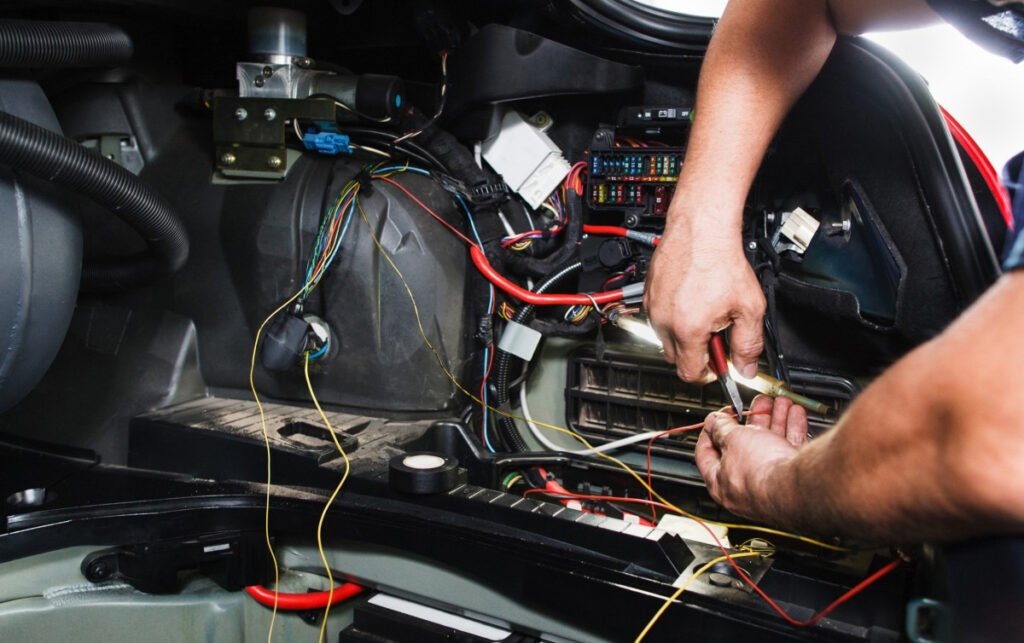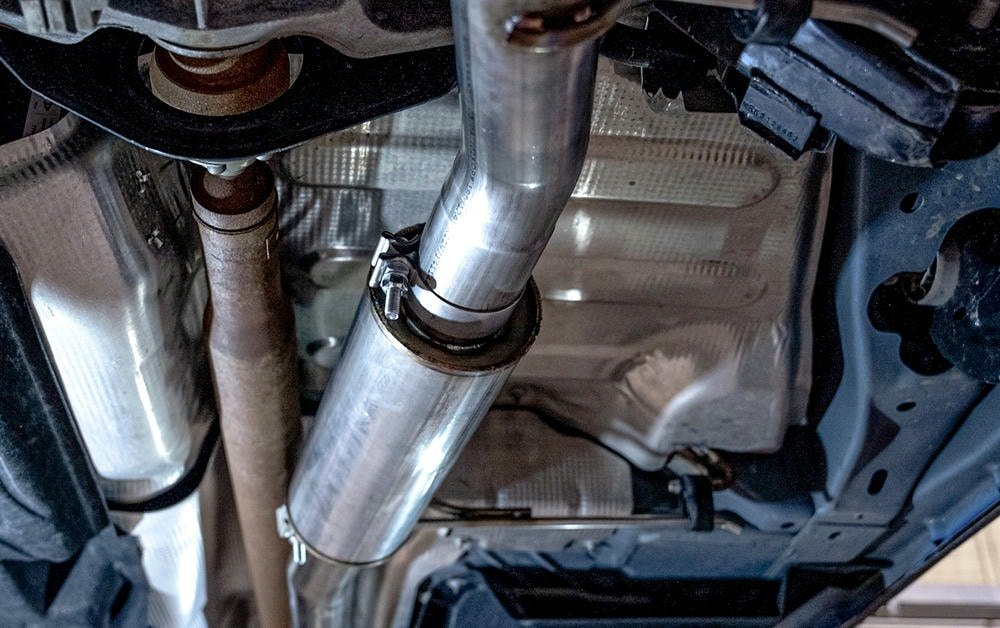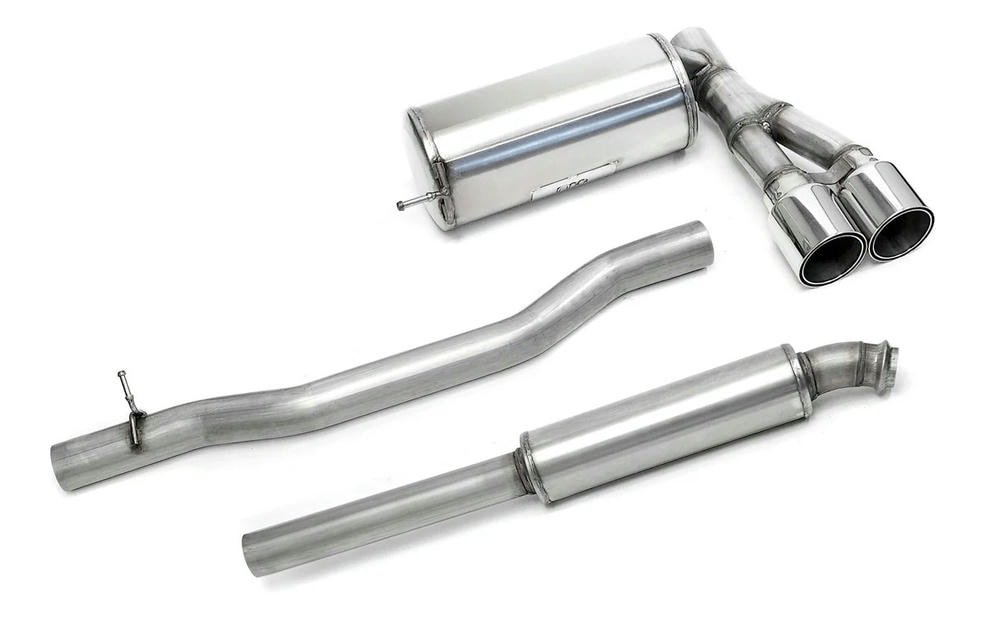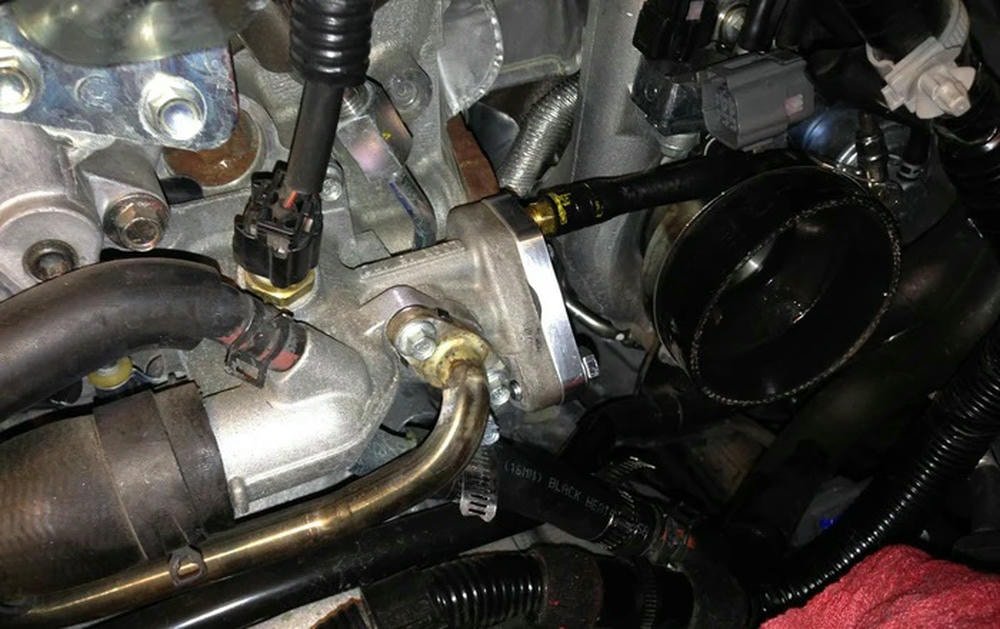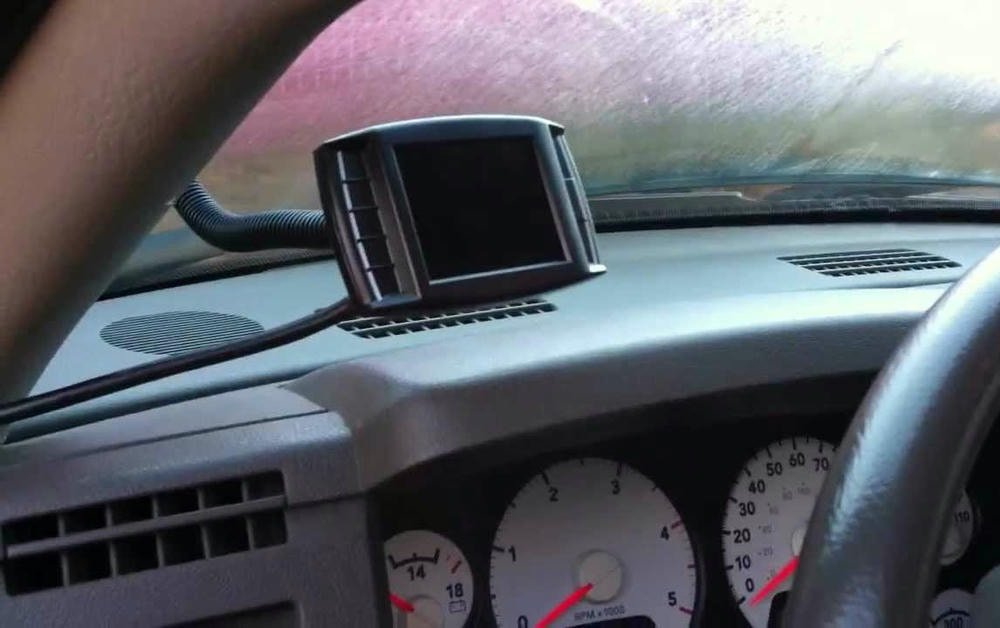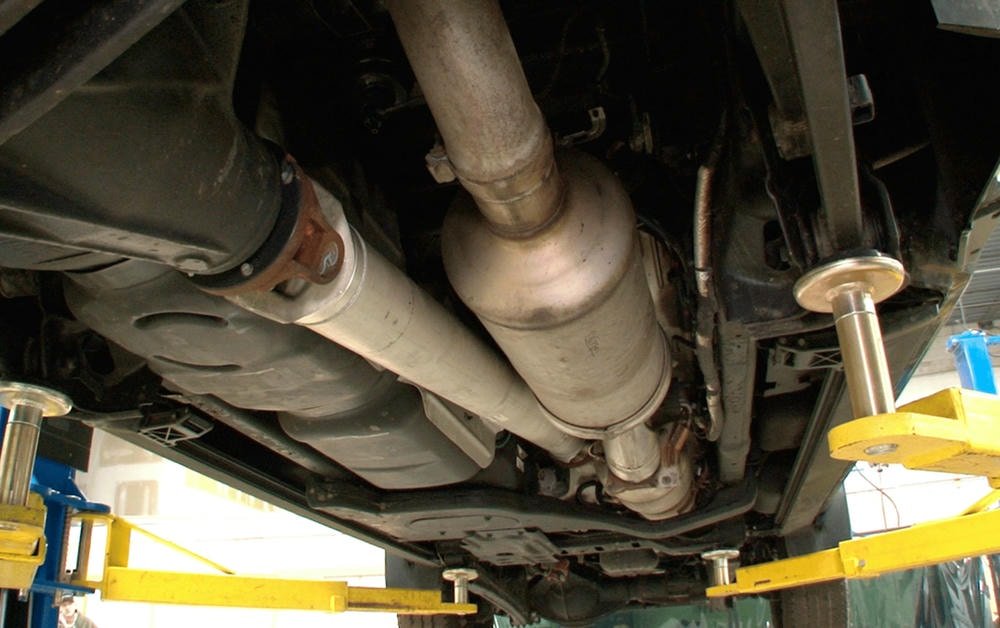This article talks about keeping and fixing wiring systems in diesel trucks. Keeping your truck’s wiring system in good shape is like making sure the veins in our body are healthy.
Just as veins carry blood to help us function, wires carry electricity that powers the truck’s parts. Over time, these wires can wear out or get damaged from use and the environment.
To avoid this, it’s vital to check them often for any signs of trouble such as broken wires or loose connections. A handy tool called a multimeter helps find issues like short circuits.
Cleaning connectors and using special grease keeps moisture away which prevents rusting. If there’s a grounding problem, fixing it fast stops electrical shocks and fires from happening.
When parts break or wear out, swapping them with high-quality ones saves money by dodging bigger problems later on.
Regular checks with tools made for diesel trucks keep everything running smoothly without surprises down the road.
Stick around to learn how to do all this right!
Table of Contents
ToggleRoutine Maintenance Tips
Keeping a wiring system in good shape needs regular care. Simple actions like checking for wear and cleaning connections help avoid big problems.
Regular Inspection for Wear and Damage
Check the wiring systems in diesel trucks often. Look for any signs of wear or damage. This includes checking for frayed wires, corrosion on connectors, and broken parts. These issues can lead to common problems like short circuits and electrical faults.
Use tools like a multimeter to test for open circuits and ensure everything is working right. Also, make sure connections are tight and secure. Loose connections can cause failures and safety risks.
Regular checks help prevent serious issues from happening later on, saving both time and money.
Cleaning and Protecting Connectors
To keep wiring systems in diesel trucks working well, cleaning and protecting connectors are key steps. Dirt, dust, and moisture can cause problems in these connections. Using a soft brush or compressed air can help remove dirt from the connectors.
Then, applying dielectric grease keeps moisture out and prevents corrosion. This step helps maintain a strong electrical connection which is crucial for a truck’s performance.
Regular maintenance of the electrical system components ensures the longevity of your vehicle’s performance.
Protecting connectors also involves checking them regularly for signs of wear or damage. If any connector looks damaged, it should be replaced to avoid larger electrical issues in the truck.
Using quality parts when replacing connectors secures better handling on the road, making every journey safe and reliable.
Checking for Proper Grounding
Checking for proper grounding is a must. This step keeps your diesel truck safe from electrical shocks and fires. Use a multimeter to check the ground connections in your wiring system.
A good connection will show low resistance on the multimeter. If you see high resistance, the grounding is not right. Fixing this can prevent big problems.
A truck owner shared his story about fixing ungrounded systems. He thought his lights were flickering due to bad bulbs. But, after using a multimeter, he found it was a grounding issue.
After correcting it, all his electrical issues stopped. This shows how important grounding checks are for safety and smooth operation of your truck’s electrical systems.
Monitoring for Electrical Shorts or Open Circuits
To keep a diesel truck running smoothly, watching for electrical shorts or open circuits is key. These problems can stop power from flowing where it needs to go. Use a multimeter to check the paths of electricity.
This tool helps find where the issue might be by showing if electricity is not reaching parts of the circuit. Many truck owners have fixed wiring system issues by catching shorts early.
They look for signs like fuses that blow often or lights that flicker. These clues suggest an electrical short or open circuit somewhere in the system. A simple test with a multimeter can save time and money before these issues cause bigger problems.
For instance, using a continuity test helps confirm if an electrical path is complete without breaks. Doing this regularly prevents sudden breakdowns and keeps everything working as it should.
Common Wiring System Problems
Common wiring system issues like corrosion and damaged wires can cause big headaches. Learn how to spot and fix these problems to keep your truck running smoothly.
Corrosion and Oxidation on Connectors
Corrosion and oxidation pose serious issues for diesel truck wiring systems. Gradually, humidity and air can wear down connectors. This results in inferior electrical performance and potentially causes the engine to stop functioning.
To identify these issues promptly, owners should search for green or white powdery substance on the metallic components of connectors.
Addressing corrosion requires cleaning with a special spray created to eliminate rust and safeguard connections. After cleaning, applying a thin film of dielectric grease assists in averting future corrosion by blocking out moisture.
This is critical not just for trucks but for any vehicle reliant on electrical systems for smooth operation.
Prevention proves superior to cure, particularly in maintaining your diesel truck’s wiring system.
Broken or Frayed Wires
Broken or frayed wires in a diesel truck’s wiring system can cause significant issues. These can result in power loss, short circuits, and even fires. Thus, it’s crucial for truck owners to routinely inspect their vehicle’s wiring.
This involves examining with great detail for any signs of wear like cracks or breaks in the insulation. A multimeter becomes useful at this point for testing continuity. If the tool doesn’t display a continuous path, there’s likely a break in the wire.
Promptly addressing these issues is crucial. Many truck owners have noticed that preemptively replacing broken or damaged sections before they fail helps to save time and money. Tools such as wire strippers and electrical tape prove useful for repairs.
Ensuring the wiring connections remain tight aids in smooth operation of the truck and helps avoid unexpected electrical failures.
Loose or Damaged Connectors
Loose or damaged connectors in a diesel truck’s wiring system can lead to power loss, short circuits, or faulty sensor readings. Trucks often vibrate while driving. This vibration can shake connectors loose over time.
A driver might notice lights flickering or gauges acting oddly if this happens. To fix these issues, one must first locate the loose connectors. They should then secure them firmly back into place.
Fixing wiring system issues also involves checking for damage on the connectors themselves. Rust or bends in the metal parts of a plug can cause poor contact with electrical points.
Using tools like multimeters helps test for proper connections and ensures each circuit works right after repair. Replacing worn-out connectors is crucial to prevent future electrical problems in the truck’s systems.
How to Troubleshoot Wiring System Issues
To fix wiring system issues, one can use a tool for checking electrical flow for broken paths. Finding and fixing short or open circuits helps keep everything running smoothly.
Using a Multimeter for Continuity Checks
Using a multimeter for continuity checks is a key part of troubleshooting wiring connections. Diesel truck owners often rely on this tool to find breaks or shorts in their vehicle’s wiring system. Here are steps to effectively perform continuity checks with a multimeter:
- Turn off the power to the circuit you’re testing. Safety first, always make sure there’s no current flowing through the wires.
- Select the continuity setting on your multimeter. It usually shows a symbol that looks like sound waves.
- Plug the black probe into the common (COM) jack and the red probe into the voltage jack on your multimeter.
- Touch one probe to each end of the wire or connection you’re testing. You do not need to worry about which color goes where for this test.
- Listen for a beep or look for a zero reading. A beep or zero means the circuit is complete and there are no breaks.
- If you hear nothing or see “OL” (open loop) on display, there’s a break somewhere in the wiring.
- Check connectors and terminals as part of your test too; these can also cause issues if they’re not making good contact.
- Use these tests to check grounding by placing one probe on earth (a metal part of the truck connected to ground) and another on the grounding wire’s endpoint.
- Perform these checks regularly as part of maintenance to catch issues before they cause failures.
- Take notes of your findings, especially if troubleshooting complex systems with many wires, so you don’t lose track of which circuits are okay and which are not.
This process can save time and money by avoiding unnecessary replacements and pinpointing exactly where problems lie within electrical systems upkeep, especially important in diesel engine maintenance where correct sensor functionality is crucial for engine diagnostics.
Diagnosing Short Circuits and Open Circuits
Diagnosing short circuits and open circuits is key in preventing wiring system failure. Here are steps diesel truck owners can take, using tools like multimeters and visual inspection, to find and fix these issues.
- Get a multimeter. This tool measures electrical properties like voltage and resistance. It’s essential for testing your truck’s wiring.
- Start with safety. Always disconnect the power before working on the electrical system to avoid getting shocked.
- Look for signs of damage or wear on wires and connectors. Cracks, frays, or burns can indicate where a problem might be.
- Check for proper grounding. A loose ground wire can lead to an open circuit.
- Use the multimeter’s continuity setting to test connections. A continuous beep means the path is clear; no sound suggests an open circuit.
- For short circuits, switch your multimeter to measure resistance (ohms). Touch probes to each end of a suspect wire or component. Very low resistance often points to a short.
- Inspect relays and fuses in your circuit breaker panel. Burnt or damaged pieces can be signs of short circuits causing too much current flow.
- Test run capacitors if your truck has them, especially in parts like HVAC systems or power strips used for additional equipment.
- Follow wiring diagrams for your specific truck model closely when checking connections against what’s expected.
10.Use clamp meters around wires without direct contact if you suspect high currents are causing problems but don’t want to disrupt the circuit completely by unplugging wires.
Following these steps helps truck owners find where electrical paths break (open circuits) or unwanted connections occur (short circuits), making repairs easier and preventing future issues.
Repairing or Replacing Damaged Sections
Repairing or replacing damaged sections of a wiring system in a diesel truck is key to preventing electrical problems. It ensures the system works well and safely.
Here’s how one might go about this task:
- Identify damaged or worn-out wires by checking for visible signs of wear, such as frayed edges or cuts.
- Use a multimeter probe to check for continuity in the wires. If electricity does not flow as it should, there’s likely a break in the wire.
- Look for signs of corrosion or oxidation on connectors. These can interrupt the electric flow and need cleaning or replacement.
- Test each electrical component with the multimeter to pinpoint where the issue lies, whether it’s a broken wire or a faulty condenser.
- Disconnect the battery before attempting any repairs to avoid getting electrocuted or causing shorts in the system.
- Cut out the damaged section of wire if it’s repairable. Strip the ends of good wire still in place.
- Connect a new piece of wire using wire connectors or soldering techniques, making sure your repair matches the gauge and type of original wiring.
- Secure all connections with electrical tape or heat shrink tubing to protect them from wear and moisture.
- Reconnect ground wires properly since improper grounding can lead to unpredictable electrical behavior and safety hazards.
- Replace any blown fuses in the circuit breakers that may have resulted from short circuits during damage.
- After repairs, use surge protectors where possible to prevent future damage from voltage spikes.
- Recheck all repaired sections with a multimeter to ensure repairs are successful and electricity flows correctly through all circuits.
Always prioritize safety and proper handling techniques when working on electrical systems to avoid fire hazards and personal harm.
Ensuring Proper Sensor Functionality
Sensors in diesel trucks play a crucial role in the vehicle’s performance. They monitor everything from engine temperature to fuel efficiency. To keep these sensors working well, follow these steps:
- Use a multimeter to check sensor continuity. This tool helps you find any breaks or issues in the electrical path.
- Clean sensor surfaces with a mild cleaner. Dirt or oil can cause wrong readings.
- Check wiring connections to sensors for corrosion. Clean them with a special spray if you find any green or white powder.
- Replace sensors that give erratic or no readings. Even small errors can lead to big problems.
- Ensure proper grounding of sensors by checking their connection to the truck’s frame.
- Update your diesel truck’s software regularly. New updates can improve how sensors work and interact with other truck parts.
- Test sensor functionality with diagnostic tools designed for diesel trucks after any repair or installation.
- Protect wiring and sensors from heat and damage by using protective sheaths or conduits where possible.
- Follow manufacturer guidelines for sensor maintenance and replacement intervals.
For each step, make sure you follow safety rules to avoid electric shocks or damaging your truck’s electrical system. Using quality parts and tools will also save time and money in the long run by preventing future issues with sensor functionality.
Preventing Future Wiring Issues
To stop wiring problems before they start, use top-notch wires and parts. Make sure every wire is put in right. Keep an eye on your system and fix things when needed. This keeps your truck running smooth.
Want to learn more? Keep reading for smart ways to keep your wiring safe and strong.
Using High-Quality Wiring Components
Choosing high-quality wiring components is key for diesel truck owners. These parts, like Underwriters Laboratory (UL) certified cables and durable connectors, ensure safety and reliability.
Good quality wires resist corrosion better. They also handle electricity flow without overheating or breaking down.
High-quality electrical components make the system more reliable over time.
Owners should use parts that meet or exceed their truck’s needs. This includes switches, plugs, and dual run capacitors designed for heavy-duty use. Doing so reduces the risk of electrical shorts and ensures the wiring lasts longer.
Investing in top-notch materials saves money on repairs and keeps trucks running smoothly.
Proper Installation Techniques
For diesel truck owners, wiring correctly is key to avoid problems later. Using high-quality electrical wires and connectors can make a big difference. They should match the truck’s system requirements to prevent issues like shorts or malfunctions.
It’s also important to secure all wiring away from moving parts or heat sources, which could damage them over time.
Owners must ensure each connection is tight and well-protected against moisture or dirt, which often lead to corrosion. Applying dielectric grease on connectors helps in this protection.
Keeping wires neatly bundled and labeled simplifies troubleshooting and maintenance tasks. Following these steps closely during installation sets up the system for long-lasting performance, saving time and money on future repairs.
Regular Monitoring and Maintenance
Keeping an eye on your diesel truck’s wiring system is key. You must check it often to catch any issues early. This means looking for worn out wires, loose connectors, and ensuring everything is grounded well.
Use a multimeter regularly to test the electrical paths in your wiring. It helps you find shorts or open circuits before they cause big problems.
Making this a habit can prevent unexpected breakdowns. Replace parts that show signs of wear or damage immediately. Also, clean all connectors and use protective coatings to fight off corrosion and oxidation.
These simple steps extend the life of your truck’s electrical components and keep you safe on the road.
Conclusion
Maintenance and trouble fixes in wiring systems are key for diesel truck owners. They make sure trucks run well and safely. John Doe, an expert with years in electrical engineering, shares insights on this topic.
He has a deep knowledge from his work and studies.
John notes that routine checks and upkeep can stop most issues before they start. These steps ensure systems work as they should, according to him. Using quality parts during setup also helps avoid future problems.
He talks about the importance of safety and honesty in this field. For example, following set rules keeps everyone safe. Being clear about how things are done is just as important.
For daily use or special cases, John suggests regular monitoring of your wiring system. This helps catch any issues early on.
Yet, like anything else, maintaining wiring systems has its upsides and downsides. It can save time and money later but requires ongoing effort.
John believes keeping up with your wiring system is worth it for diesel truck owners’ peace of mind. It makes sure trucks run smoothly and last longer without big troubles along the way.
FAQs
What is the first step in maintaining and troubleshooting a wiring system?
The first step to maintain and troubleshoot a wiring system involves understanding how to troubleshoot wiring connections. This knowledge can help identify the root cause of any issues in your electrical outlets, light switch, or breaker box.
How do I repair my custom wiring setups?
To repair custom wiring setups, you need to follow a comprehensive guide on electrical systems maintenance and repair. It’s crucial to stay safe while working with electrical hazards by following safety measures at all times.
Can an electrician help me understand how capacitance affects my electrical system?
Yes! Electricians have expert knowledge about farads, the unit for measuring capacitance, as well as other components like bleed resistors and coils that are part of your thermostat or contactor setup.
Are there resources available online for learning more about maintaining and troubleshooting my home’s electrical wiring?
Definitely! You can find many guides on social media platforms that provide actionable guidance for maintaining your home’s electrical systems safely.
What should I be careful about when dealing with cookies while browsing these guides online?
While browsing these guides online, it’s important to remember GDPR regulations concerning cookies used by websites which track user behavior metrics such as bounce rate.

